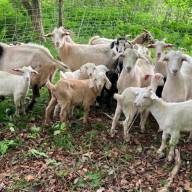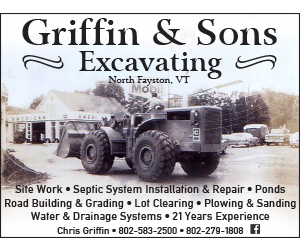Fayston-based art and building program Sculpture School has been running for a decade. The Valley Reporter talked to five students and alumni who said they learned, firsthand, about what it means to take charge of one’s own learning.
Noah Schwartz, now a junior in mechanical engineering at the University of Vermont, remembers the first class that founder and director Eddie Merma offered in 2014, when a small group of kids built two structures from a pile of reclaimed wood – the remnants of a pizza oven that had previously caught on fire. Schwartz said his hands were covered in soot and ash as he picked through the pile, excited to build with his friends.
He remembers a lot of silly games – like one where students had to help each other quickly build ladders, so they could reach snacks that Merma had previously hidden about 10 feet up on the branches of some trees.
Schwartz also recalls the sense of autonomy he felt as a student in the program, building large-scale projects using power tools and lumber as a 9-year-old. He said he got to make his own decisions about what to create, how to go about it, how to spend his time in class and how to use the space – a wood shop and outdoor space based at Knoll Farm in Fayston.
ALL STRUCTURED
“You don’t really get much say when you’re a kid in school – where you go, what you do, or anything. It’s all structured for you, except maybe during recess. So, working in a space that’s not structured, where you can actually work on what you want, was a big deal,” Schwartz said.
Merma teaches homeschool, after-school and summer programs for roughly 200 kids a year, ages 8 to 14. The primary focus is building with wood and recycled materials, but he also offers painting, sculpture, moviemaking, and welding along with another local teacher, Johnno Landman.
Jonas Jarecki, a longtime Sculpture School student who’s now a sophomore at Oberlin College in Ohio studying cinema and politics, agreed that student-driven learning was the focus of the school, but he put it somewhat differently: “Eddie rarely said no to kids’ ideas.”
SOAPBOX DERBY
Jarecki recalled being enrolled in a class called Soapbox Derby, where kids make large-scale cars from lumber, lawn mower wheels, wire, and papier maché. He wanted to make amendments to the simple design that Merma offered students as a template – specifically a more complex steering system that shifted left to right. Merma may have been skeptical, Jarecki said, but he didn’t show it. He told Jarecki to try it.
Jarecki remembers sketching out his steering design for about 20 minutes, then trying it. It worked. “That was the first time I really got to have my own say in what I wanted to do in my education,” he said.
When Jarecki and Schwartz turned 13 or so, they transitioned into working as shop assistants – helping younger kids learn how to use tools safely and otherwise provide support.
LET THEM FIGURE IT OUT
Schwartz recalls Merma imparting some advice about how to interact with younger students. “He said, ‘if the student has an idea, even if you don’t think it will logically work, don’t tell them that. Let them figure it out on their own.’”
“I think that’s something really important, that we’re often missing in education,” Schwartz added. In his work designing and building electric airplane chargers at the Burlington design firm Beta, when new or strange ideas arise, “I’m less inclined to say no,” he said.
Wren Fortunoff said the education she got at Sculpture School felt experimental.
CALVIN AND HOBBES
The wood shop where Merma bases his programs is home to Fortunoff, who grew up on Knoll Farm. She recalled taking his Soapbox Derby class at 10 years old, inspired by grainy film footage from a 1975 event hosted by the San Francisco Museum of Modern Art, where artists built cars – an event that inspired Merma to offer the class to local youth. Fortunoff made a car in the form of Hobbes, the comic strip tiger character from Calvin and Hobbes.
“Now, I think I’m still looking for experiences like that in school, and it can be disappointing, actually, because most of school is not like that.”
Fortunoff is now a sophomore at the University of Vermont studying ecology.
OTHER WAYS TO LEARN
Dana Witzel said she signed her son Harris up for Sculpture School eight years ago because he was having a hard time academically, especially with reading. She said the building courses made him more confident – that “it shows kids there are other ways to learn.”
Witzel said all in all, Harris, 14, probably participated in 20 classes over the years, but Harris said it feels more like 50. His favorite courses were welding and those focused on building large structures in the woods.
He said he values how Sculpture School students push each other to try new things in a fun environment, recalling how he helped his friend and his brother Oliver, 11, recently build an upside-down house in the woods – not an entirely easy project to figure out.
ROLLER COASTER
Oliver’s favorite project from his time in the program, though, was building a 200-foot-long roller coaster made out of 2x4s. Merma just concluded his fifth iteration of the class.
“What we made didn't need to be purposeful or well put together,” Fortunoff reflected. “It made us feel like we could actually make stuff.”













